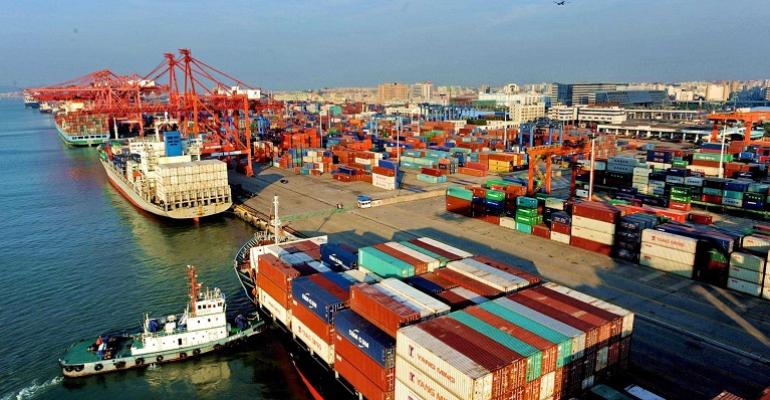David Jordan, regional director, asia at Maritime Strategies International said that vessel utilisation had been turbocharged by port delays and spot freight rates had seen stratospheric rises on disruption and equipment scarcity.
Speaking at TOC Asia’s container, trade and business outlook 2021 panel, Jordan said that time charter rates across the vessel size spectrum have hit decade highs and contract length was also extending substantially, despite signs that the market is over the worst of its delays and equipment shortages.
"Some argue, quite rightly, that we're seeing a structural realigment of the market that promises elevated rates for several years to come," said Jordan.
Alan Murphy, CEO & Partner, Sea-Intelligence said that the two most important factors in the market were the lines’ ability to perfectly balance supply and demand with blanked sailings—as they proved in 2020—and market support from US consumer spending on goods.
“Carriers are absolutely committed to managing supply and demand which means that I absolutely do not expect that we will see a return to below-cost freight rates anytime in the next decade,” said Murphy.
Jordan saw signs of consumer demand easing but expected healthy demand for the rest of the year. “Overall, we’re expecting containerised trade to grow by about 7% this year. That growth journey will continue into 2022.” said Jordan.
There were signs of increased import demand on multiple trade lanes, but the North American market was driving demand due to the sheer size of the market and the large increases in demand for goods. Despite overall US consumer spending falling, spending on goods was higher than pre-pandemic levels, said Murphy.
Murphy agreed that demand for goods was likely to drop as service spending increases again when the economy reopens, but support from US consumers will have a long tail as sectors restock inventories from heavily depleted levels.
While Jordan attributed a lot of the extra bounce in the market to trading inefficiencies which are now beginning to ease, he believed rates will normalise at a higher level than pre-pandemic.
On the supply side, Jordan expected the fleet to grow 3.4-3.5% this year, although there was a risk that number could change depending on scrapping levels as India suffers rising COVID infections. Newbuild vessel contracting had hit highs not seen since 2015, and was threatening to reach levels not seen since 2007.
“There’s only one thing worse than container lines without money, and that’s container lines with money. There’s this fear that container lines will go on a massive ordering spree and tank the market for years to come. I don’t think that’s a big risk. I believe the ordering that we’ve seen is a matter of maintenance.” said Murphy, adding that lines appear to have learned their lesson in that regard.
Copyright © 2024. All rights reserved. Seatrade, a trading name of Informa Markets (UK) Limited.
Add Seatrade Maritime News to your Google News feed.  |


